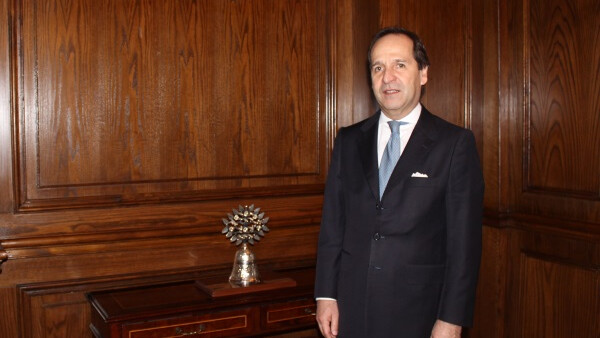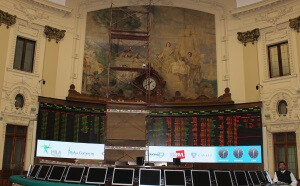Interview with Juan Andrés Camus, President of the Santiago Stock Exchange
LatAm INVESTOR caught up with the Santiago Stock Exchange’s new president, Juan Andrés Camus, to find out how he plans to expand Chile’s capital markets.

LatAm INVESTOR caught up with the Santiago Stock Exchange’s new president, Juan Andrés Camus, to find out how he plans to expand Chile’s capital markets.
Since becoming president you have drawn up 24 reform measures; what’s the thinking behind these changes?
At present stockbrokers are supervised by the SVS [Spanish language acronym for the market regulator] which carries out the typical functions of supervision and monitoring. But we have decided to create a further layer of regulation for stockbrokers that use the Santiago Stock Exchange (SSE). It’s something that you see in more mature capital markets around the world and we decided that it would be an important step for us.
"None of the theory behind it is new but it ensures that it is being put into practise…"
In Chile some stockbrokers had already developed their own internal processes and best practises to ensure that there was no conflict of interest between their proprietary trading activities and their care of clients. Yet we wanted to extend this to all players. Often they are family companies that are very old and have evolved over several generations with different styles of managing their business. But now in the 21st century if we want to attract international investors we need to ensure that the local stockbrokers all adhere to the best practises of corporate governance. The measures cover everything from what information needs to be disclosed to the market, to how they should report research. None of the theory behind it is new but it ensures that it is being put into practise.
Chile’s capital markets are more developed than many in the region; can it become a local hub for financial services?
I’ve been involved in this industry for more than 25 years and the growth in that time has been impressive. Take liquidity for example. Back in 1988 the daily trading volume stood at around $2million - today that’s grown to $200million, so liquidity has increased significantly.

This growth has been fuelled by the steady stream of initial public offerings (IPOs) and extra capital issues placed in the market. Another important factor has been the number of Chilean companies that have tapped US markets. During the 90s more than 20 companies from Chile issued American depositary receipts. But crucially – and this is what sets the SSE apart from some neighbouring bourses – the majority of trading Chilean equity trades take place in Santiago, not in the US. Much thanks for this must go to the government of Ricardo Lagos, which worked hard to bring trading back here through measures such as reducing the capital gains tax for the most liquid shares. During the 1990s about 2/3rds of the trading volumes of Chilean shares took place in the US, with the rest happening in Santiago. But today that has been more than reversed with 80% taking place on the SSE.
One strange characteristic of the SSE is that mining, which is the bedrock of Chile’s economy, is barely represented on the exchange; will that change in the future?
Yes I think that it will. We speak to some of the big mining companies and I think they understand that there is a lot of local demand for their stock. After all, not all Chilean investors will invest abroad to gain exposure to local mining companies.
As a first step we have recently signed an agreement with the Toronto Stock Exchange (TSX). This will allow firms to issue dual listings in both the TSX and the SSE. Because the TSX is very heavily weighted to mining – about 80% - that should help to get more mining firms listed on the SSE. We are still waiting approval from the SVS, as the agreement will involve companies agreeing to different regulatory requirements, but we are optimistic that it will happen. In the beginning we will probably see the smaller firms using this option but eventually we hope that the more established names will be attracted.
The SSE is part of the Mila initiative that has created a joint trading platform across Colombia, Chile and Peru. Some analysts have been disappointed by the low trading volumes on Mila; what’s your take on the situation?
Look, I am very optimistic about Mila’s long-term future. Moreover I think that the number of trades happening across these markets is a lot bigger than people realise. The fact is that neither you nor I can really see what is happening because there are a lot of transactions between Mila market participants that don’t show up in the system. At the moment investors from Chile making a trade in Colombia will do so through a local broker in Colombia. So when that trade goes through it’s registered as a Colombian transaction even though it has really been a cross-border one. We know this because we talk to investors and we know that there is a lot of interest in Mila investments, even if these are not happening through the Mila platform.
So do you think volumes will improve when Mexico finally joins at the end of this year?
Mexico is a very valuable market which will add a lot of scale and make Mila even more attractive but the real problem is the settlement processes. Today it is more complicated to use a Chilean broker to execute a trade in Colombia than simply use a Colombian broker. The reason is that the settlement process in the Chilean exchange has its own method of compensation that is different to the Colombian one. So this means that to make the trade both brokers have to take an unregulated counterparty risk about the settlement. So, understandably, many prefer to trade within their own exchange where they are protected by a compensation mechanism. I don’t think that we will see more Mila volume traded until the settlement issue is resolved sorted.